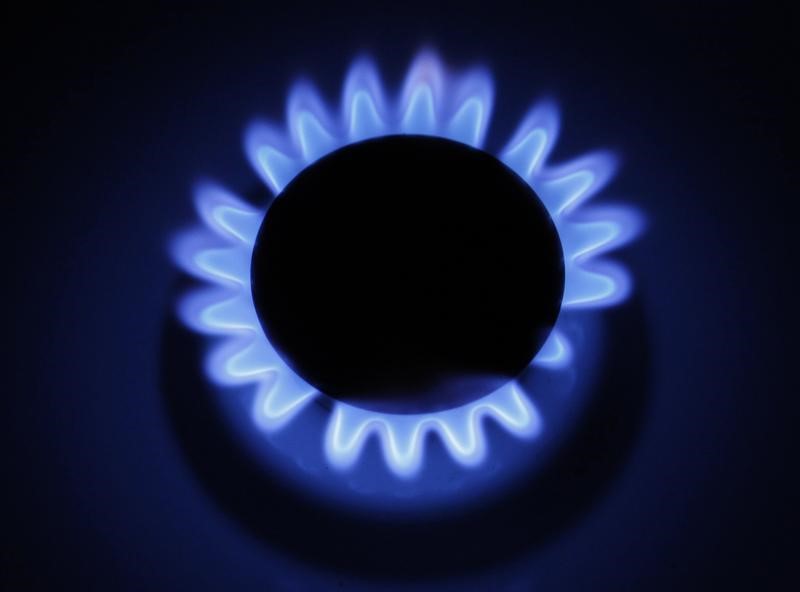Investing.com — Natural gas futures have lost a cumulative 8% in just two days of trading, after a rally that changed course for the long-depressed fuel market.
But charts indicate that bulls are still in control as a new front-month futures contract comes into place and market participants prep for a weekly update on storage.
In Wednesday’s session, the natural gas contract for July went off the board of the New York Mercantile Exchange’s Henry Hub, taking with it some of the volatility that had influenced trading over the past 48 hours.
Succeeding it officially from Thursday as front-month will be , which Investing.com had been citing as the most-active contract since much of the daily trading volume moved over there.
August gas lost 12.1 cents, or 4.3%, to settle Wednesday’s session at $2.668 per mmBtu, or metric million British thermal units. That was in addition to the prior day’s drop of 3.6%.
The two-day slide positioned natural gas for a drop of more than 6% on the week after a near 25% rally over three prior weeks.
Upside not broken yet
Chart action on gas prices shows the market’s upside had not been broken, said Sunil Kumar Dixit, chief technical strategist at SKCharting.com.
Support for gas ranges from the 50-day EMA, or Exponential Moving Average, of $2.47 to the Daily Middle Bollinger Band of $2.49 and the 100-day SMA, or Simple Moving Average, of $2.38, said Dixit.
“As long as these support areas are not violated, resumption of the recent uptrend remains intact, with the targets being the psychological barrier of $3 first, followed by the 100-month SMA of $3.25 next.”
The two-day consolidation in gas prices came ahead of the weekly update on due on Thursday from the Energy Information Administration, or EIA.
U.S. utilities likely added 83 bcf, or billion cubic feet, of gas to storage last week, according to a consensus of industry analysts tracked by Investing.com.
In the prior week to June 16, utilities added 95 bcf to storage.
Latest storage build likely normal for this time of year
If the estimated 83-bcf injection for the week ended June 23 is correct, it will be just a shade above the 81-bcf build seen during the same week a year ago and the five-year (2018-2022) average increase of 80 bcf.
The latest build would also lift total U.S. gas inventories to 2.811 tcf, or trillion cubic feet. That would be 25.5% above the same week a year ago and about 14.9% above the five-year average.
It has been an interesting time for natural gas, with bulls managing to keep the market in the positive for most of the month.
With a near 18% gain for June, gas futures are headed for their best month in almost a year. The last time the market rallied more in a month was in July 2022, when it gained 46%.
While summer weather hasn’t hit its typical baking point across the country, cooling demand is inching up by the day, particularly in Texas. This has sparked the realization in the trade that higher price lows might be more common than new bottoms. The lowest Henry Hub’s front-month got to this week was $2.647, versus the $2.136 bottom seen at the start of June.
Indicators on air-conditioning demand, released Thursday by Refinitiv, the data arm of Reuters, showed there were around 65 CDDs, or cooling degree days, last week — close to the 30-year normal of 70 CDDs for the period.
CDDs, used to estimate demand to cool homes and businesses, measure the number of degrees a day’s average temperature is above 65 degrees Fahrenheit.
Read the full article here










